Opinion & Analysis
DeFrancesco: Why Tiger Can Still Come Back
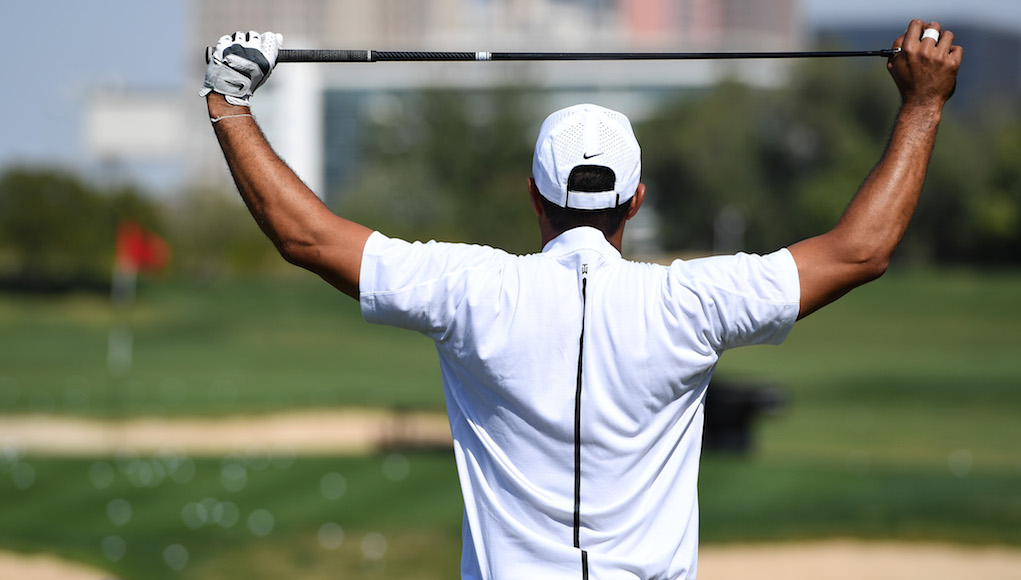
Just about everyone who is interested in golf wants to know if Tiger can come back. I happen to think he can, and I have a unique perspective as to what he is going through.
I had my first back surgery (a single-disc laminectomy, much like Tiger’s first three back surgeries) in 1983 while I was playing the mini tours in Florida. I had been a First-Team All-American at LSU in 1979 (good team that year: Corey Pavin, Fred Couples, Bob Tway, John Cook, Bobby Clampett, Gary Hallberg, Scott Watkins and myself. Mark O’Meara, Payne Stewart, Joey Sindelar and Mark Wiebe were on the 2nd team), and I had turned professional a year later. I made it to the Q-School finals in 1985, but the amount of practice it took to get there blew up my back again and I had to have a two-level fusion at S1-L5 and L4-L5. I gave up trying to make the Tour and got a job teaching, and it took me a year before I could play 18 holes.
Unfortunately for me, my trials were not yet over. The fusion bone grew in too well, so I had to have another surgery in 1988 to make more room around the nerve roots that the fusion had stabilized. I took a couple of years off away from the game, but I got back into teaching in 1991. I got to be a busy teacher, but I was determined to continue to play competitively at the club pro level. I made a pretty good career out of it, earning player of the year honors in my section four times, qualifying for five PGA Championships (by finishing in the top-20 at the National) and winning the National Club Pro in 2001 at age 43. I had to be constantly mindful of how much I practiced, and there were many occasions when I had to withdraw from events. Over the years, I tried to make adjustments to my swing that would allow me to play and get the most out of my body I could.
As a young player, my swing resembled the greats of the 70s (Nicklaus, Watson, Miller, Weiskopf) with an exaggerated “reverse-C” finish. I discarded this type of action for a more Hogan-esque rotational swing that was less stressful on my lower spine. This held up nicely for the most part until about 2009, after which the stiffness that had built up and over time made it difficult to strike the ball well enough to compete at my accustomed level. In December of 2014, I went in for my fourth and last surgery. My surgeon opened space around the nerves exiting from the sides of the two discs above the fusion, L3-L4 and L2-L3. The main problem with a fusion is that it eliminates all rotation in that area of the spine, and biomechanically the areas above and to the sides of the fusion are stressed in an abnormal way. It took me eight months to get back to tournament golf after that, and I am now able to practice more than I have in many years.
As you know, Tiger Woods just underwent his fourth back surgery in the past two years (he has now caught up to me in the race no one wants to win), and most of the pundits are thinking that he is done and will never compete on a high level again — certainly not anywhere near the level he demonstrated from the early nineties to 2013. As I mentioned, I happen to disagree with that assessment, and I will tell you why. The thing that most people who have not had back problems don’t understand is the difference between pain and limitation. A player of Tiger’s caliber can learn to play with limitations. If his body won’t do as much of what it used to do, he can still adapt his swing to what his body will allow and play great golf. If the basic movements required to make a good swing cause pain, however, the body simply will not allow itself to be injured and thus it will stubbornly refuse to function in the manner the player wants it to.
Tiger has been trying to alleviate his pain with the less invasive surgeries he has undergone up to this most recent one. It hasn’t worked out because even the minimum amount of stress he has put on it trying to play has eventually brought about pain, and with pain the muscles spasm to protect the area from further damage. That’s the end of the attempt to play. Now that he has undergone a fusion to stabilize the spine and remove the faulty disc, he has a chance to eliminate the nerve pain caused by the narrowing of the nerve root openings. This is a big deal. My guess is that his surgeons have recommended a fusion procedure for some time, but the word “fusion” itself is kind of scary. The first orthopedic I ever saw for my back told me I would need a fusion. I thought he was crazy and found another doctor. Tiger probably felt like he could beat the problem with smaller measures, but after his last failed attempt at coming back he finally saw the writing on the wall and opted for the more drastic fix.
The key is this: if Tiger can play pain-free golf, he can figure out how to play within his limitations and can compete at the highest level. Ben Hogan is a great example of just such a scenario. Hogan was playing the best golf of his life in 1948 and early in 1949. Then he was hit head-on by a bus while driving back to Texas from a tournament. He suffered multiple serious injuries and almost died of blood clots a few weeks after the accident. He underwent a radical procedure to tie off one of the main arteries to his lower extremities, and as a result he had to soak in a hot tub for two hours and wrap his legs in ace bandages before every single round. In addition to the blood supply problems, Hogan also suffered a fractured left collarbone, a double ring fracture of the pelvis, a broken left ankle, a broken rib, and several deep cuts and contusions around his left eye. All of this served to shorten Hogan’s career (he essentially retired in 1955, six years after the accident), and he never played in more than six events in a single year after 1949. But due to his determination and technical knowledge of the golf swing, he could play through whatever pain he felt and was able to modify his swing. He was not as powerful, but he was perhaps even more precise.
Hogan won six majors between 1950 and 1953, and he came close in others. I see no reason why Tiger, if he can rid himself of the stinging nerve pain and muscle spasms that follow, can’t pull a Hogan and make a great comeback. I believe he needs to discard the notion of “explosiveness.” I am not talking about swinging easy, rather, I would like to see him compress less into the ground in the backswing and bring his hand path out toward the ball more in transition to give himself more space for his arms and hands and to encourage rotation in his lower body. He doesn’t have to hit it as far as Dustin Johnson to win majors; he can hit it as far as Zach Johnson and win.
Tiger may not need the money, but I certainly think he still has the drive to continue to compete and win PGA Tour events. I don’t believe he will give up, and this next attempt to make a comeback will again be something to watch.
- LIKE330
- LEGIT44
- WOW17
- LOL8
- IDHT6
- FLOP5
- OB4
- SHANK73
19th Hole
Vincenzi’s 2024 PGA Championship betting preview: Rising star ready to join the immortals at Valhalla

The second major of the 2024 season is upon us as the world’s best players will tee it up this week at Valhalla Golf Club in Louisville, Kentucky to compete for the Wanamaker Trophy.
The last time we saw Valhalla host a major championship, Rory McIlroy fended off Phil Mickelson, Henrik Stenson, Rickie Fowler and the creeping darkness that was descending upon the golf course. The Northern Irishman had the golf world in the palm of his hand, joining only Tiger Woods and Jack Nicklaus as players who’d won four major championships by the time they were 25 years old.
Valhalla is named after the great hall described in Norse mythology where the souls of Vikings feasted and celebrated with the Gods. The course is a Jack Nicklaus-design that has ranked among Golf Digest’s “America’s 100 Greatest Courses” for three decades.
Valhalla Golf Club is a par-71 measuring 7,542 yards with Zoysia fairways and Bentgrass greens. The course has rolling hills and dangerous streams scattered throughout and the signature 13th hole is picturesque with limestone and unique bunkering protecting the green. The 2024 PGA Championship will mark the fourth time Valhalla has hosted the event.
The field this week will consist of 156 players, including 16 PGA Champions and 33 Major Champions.
Past Winners of the PGA Championship
- 2023: Brooks Koepka (-9) Oak Hill
- 2022: Justin Thomas (-5) Southern Hills
- 2021: Phil Mickelson (-6) Kiawah Island
- 2020: Collin Morikawa (-13) TPC Harding Park
- 2019: Brooks Koepka (-8) Bethpage Black
- 2018: Brooks Koepka (-16) Bellerive
- 2017: Justin Thomas (-8) Quail Hollow
- 2016: Jimmy Walker (-14) Baltusrol
- 2015: Jason Day (-20) Whistling Straits
- 2014: Rory McIlroy (-16) Valhalla
In this article and going forward, I’ll be using the Rabbit Hole by Betsperts Golf data engine to develop my custom model. If you want to build your own model or check out all of the detailed stats, you can sign up using promo code: MATTVIN for 25% off any subscription package (yearly is best value).
Key Stats For Valhalla
Let’s take a look at five key metrics for Oak Hill to determine which golfers boast top marks in each category over their past 24 rounds.
1. Strokes Gained: Approach
Valhalla will play as a true all-around test of golf for the world’s best. Of course, it will take strong approach play to win a major championship.
Strokes Gained: Approach Over Past 24 Rounds
- Shane Lowry (+1.25)
- Scottie Scheffler (+1.09)
- Jordan Smith (+1.05)
- Tom Hoge (+.96)
- Corey Conners (+.94)
2. Strokes Gained: Off the Tee
Valhalla will play long and the rough will be penal. Players who are incredibly short off the tee and/or have a hard time hitting fairways will be all but eliminated from contention this week at the PGA Championship.
Strokes Gained: Off the Tee Over Past 24 Rounds:
- Bryson DeChambeau (+1.47)
- Scottie Scheffler (+1.11)
- Keith Mitchell (+.90)
- Alejandro Tosti (+.89)
- Ludvig Aberg (+.82)
Strokes Gained: Total on Nickalus Designs
Valhalla is a classic Nicklaus Design. Players who play well at Nicklaus designs should have an advantage coming into this major championship.
Strokes Gained: Total on Nicklaus Designs over past 36 rounds:
- Jon Rahm (+2.56)
- Scottie Scheffler (+2.48)
- Patrick Cantlay (+2.35)
- Collin Morikawa (+1.79)
- Shane Lowry (+1.57)
Strokes Gained: Tee to Green on Very Long Courses
Valhalla is going to play extremely long this week. Players who have had success playing very long golf courses should be better equipped to handle the conditions of this major championship.
Strokes Gained: Total on Very Long Courses Over Past 24 Rounds:
- Scottie Scheffler (+2.44)
- Rory McIlroy (+2.24)
- Will Zalatoris (+1.78)
- Viktor Hovland (+1.69)
- Xander Schauffele (+1.60)
Strokes Gained: Total in Major Championships
One factor that tends to play a large role in deciding major championships is which players have played well in previous majors leading up to the event.
Strokes Gained: Total in Major Championships over past 20 rounds:
- Scottie Scheffler (+3.14)
- Will Zalatoris (+2.64)
- Rory McIlroy (+2.49)
- Xander Schauffele (+2.48)
- Tommy Fleetwood (2.09)
Strokes Gained: Putting on Bentgrass Greens
Valhalla features pure Bentgrass putting surfaces. Players who are comfortable putting on this surface will have an advantage on the greens.
Strokes Gained: Putting on Bentgrass Greens over Past 24 Rounds:
- Ludvig Aberg (+1.12)
- Denny McCarthy (+1.08)
- Matt Fitzpatrick (+0.99)
- Justin Rose (+0.93)
- J.T. Poston (0.87)
Strokes Gained: Total on Zoysia Fairways
Valhalla features Zoysia fairways. Players who are comfortable playing on this surface will have an advantage on the field.
Strokes Gained: Total on Zoysia Fairways over past 36 rounds:
- Justin Thomas (+1.53)
- Will Zalatoris (+1.47)
- Xander Schauffele (+1.40)
- Brooks Koepka (+1.35)
- Rory McIlroy (+1.23)
2024 PGA Championship Model Rankings
Below, I’ve compiled overall model rankings using a combination of the key statistical categories previously discussed — SG: Approach (25%), SG: Off the Tee (22%), SG: T2G on Very Long Courses (12%), SG: Putting on Bentgrass (+12%), SG: Total on Nicklaus Designs (12%). SG: Total on Zoysia Fairways (8%), and SG: Total in Major Championships (8%).
- Brooks Koepka
- Xander Schauffele
- Rory McIlroy
- Scottie Scheffler
- Bryson DeChambeau
- Shane Lowry
- Alex Noren
- Will Zalatoris
- Cameron Young
- Keith Mitchell
- Hideki Matsuyama
- Billy Horschel
- Patrick Cantlay
- Viktor Hovland
- Adam Schenk
- Chris Kirk
- Sahith Theegala
- Min Woo Lee
- Joaquin Niemann
- Justin Thomas
2024 PGA Championship Picks
Ludvig Aberg +1800 (BetMGM)
At The Masters, Ludvig Aberg announced to the golf world that he’s no longer an “up and coming” player. He’s one of the best players in the game of golf, regardless of experience.
Augusta National gave Aberg some necessary scar tissue and showed him what being in contention at a major championship felt like down the stretch. Unsurprisingly, he made a costly mistake, hitting it in the water left of the 11th hole, but showed his resilience by immediately bouncing back. He went on to birdie two of his next three holes and finished in solo second by three shots. With the type of demeanor that remains cool in pressure situations, I believe Ludvig has the right mental game to win a major at this point in his career.
Aberg has not finished outside of the top-25 in his past eight starts, which includes two runner-up finishes at both a “Signature Event” and a major championship. The 24-year-old is absolutely dominant with his driver, which will give him a major advantage this week. In the field he ranks, in Strokes Gained: Off the Tee, and has gained strokes in the category in each of his past ten starts. Aberg is already one of the best drivers of the golf ball on the planet.
In Norse mythology, Valhalla is the great hall where the souls of Vikings feasted and celebrated with the Gods. The Swedes, who are of Old Norse origin, were the last of the three Scandinavian Kingdoms to abandon the Old Norse Gods. A Swede played a major role in the 2014 PGA Championship at Valhalla, and I believe another, Ludvig Aberg, will be the one to conquer Valhalla in 2024.
Bryson DeChambeau +2800 (BetMGM)
Bryson DeChambeau is one of the few players in the world that I believe has the game to go blow-for-blow with Scottie Scheffler. Although he isn’t as consistent as Scheffler, when he’s at his best, Bryson has the talent to beat him.
At The Masters, DeChambeau put forth a valiant effort at a golf course that simply does not suit his game. Valhalla, on the other hand, is a course that should be perfect for the 30-year-old. His ability to overpower a golf course with his driver will be a serious weapon this week.
Bryson has had some success at Jack Nicklaus designs throughout his career as he won the Memorial at Muirfield Village back in 2018. He’s also had incredible results on Bentgrass greens for the entirety of his professional career. Of his 10 wins, nine of them have come on Bentgrass greens, with the only exception being the Arnold Palmer Invitational at Bay Hill. He also has second place finishes at Medinah and TPC Summerlin, which feature Bentgrass greens.
Love him or hate him, it’s impossible to argue that Bryson isn’t one of the most exciting and important players in the game of golf. He’s also one of the best players in the world. A second major is coming soon for DeChambeau, and I believe he should be amongst the favorites to hoist the Wanamaker Trophy this week.
Patrick Cantlay +4000 (FanDuel)
There’s no way of getting around it: Patrick Cantlay has been dissapointing in major championships throughout his professional career. He’s been one of the top players on Tour for a handful of years and has yet to truly contend at a major championship, with the arguable exception of the 2019 Masters.
Despite not winning majors, Cantlay has won some big events. The 32-year-old has won two BMW Championships, two Memorial Tournaments as well as a Tour Championship. His victories at Memorial indicate how much Cantlay loves Nicklaus designs, where he ranks 3rd in the field in Strokes Gained: Total over his past 36 rounds behind only Scottie Scheffler and Jon Rahm.
Cantlay also loves Bentgrass greens. Six of Cantlay’s seven individual wins on the PGA Tour have come on Bentgrass greens and he also was one of the best putters at the 2023 Ryder cup at Marco Simone (also Bentgrass). At Caves Valley (2021 BMW Championship), he gained over 12 strokes putting to outduel another Bentgrass specialist, Bryson DeChambeau.
Cantlay finished 22nd in The Masters, which was a solid result considering how many elite players struggled that week. He also has two top-ten finishes in his past five PGA Championships. He’s undeniably one of the best players in the field, therefore, it comes down to believing Cantlay has the mental fortitude to win a major, which I do.
Joaquin Niemann +4000 (BetMGM)
I believe Joaquin Niemann is one of the best players in the world. He has three worldwide wins since December and has continued to improve over the course of his impressive career thus far. Still only 25, the Chilean has all the tools to be a serious contender in major championships for years to come.
Niemann has been the best player on LIV this season. Plenty will argue with the format or source of the money on LIV, but no one can argue that beating players such as Jon Rahm, Bryson DeChambeau, Dustin Johnson, Brooks Koepka and Cameron Smith is an unremarkable achievement. Niemann is an elite driver of the golf ball who hits it farther than just about anyone in the field not named Bryson DeChambeau or (arguably) Rory McIlroy.
Niemann is another player who has been fantastic throughout his career on Bentgrass greens. Prior to leaving the PGA Tour, Bentgrass was the only green surface in which Joaco was a positive putter. It’s clearly a surface that he is very comfortable putting on and should fare around and on the greens this week.
Niemann is a perfect fit for Valhalla. His low and penetrating ball flight will get him plenty of runout this week on the fairways and he should have shorter shots into the green complexes than his competitors. To this point in his career, the former top ranked amateur in the world (2018) has been underwhelming in major championships, but I don’t believe that will last much longer. Joaquin Niemann is a major championship caliber player and has a real chance to contend this week at Valhalla.
- LIKE15
- LEGIT6
- WOW1
- LOL0
- IDHT0
- FLOP2
- OB0
- SHANK6
Opinion & Analysis
The Wedge Guy: What really makes a wedge work? Part 2
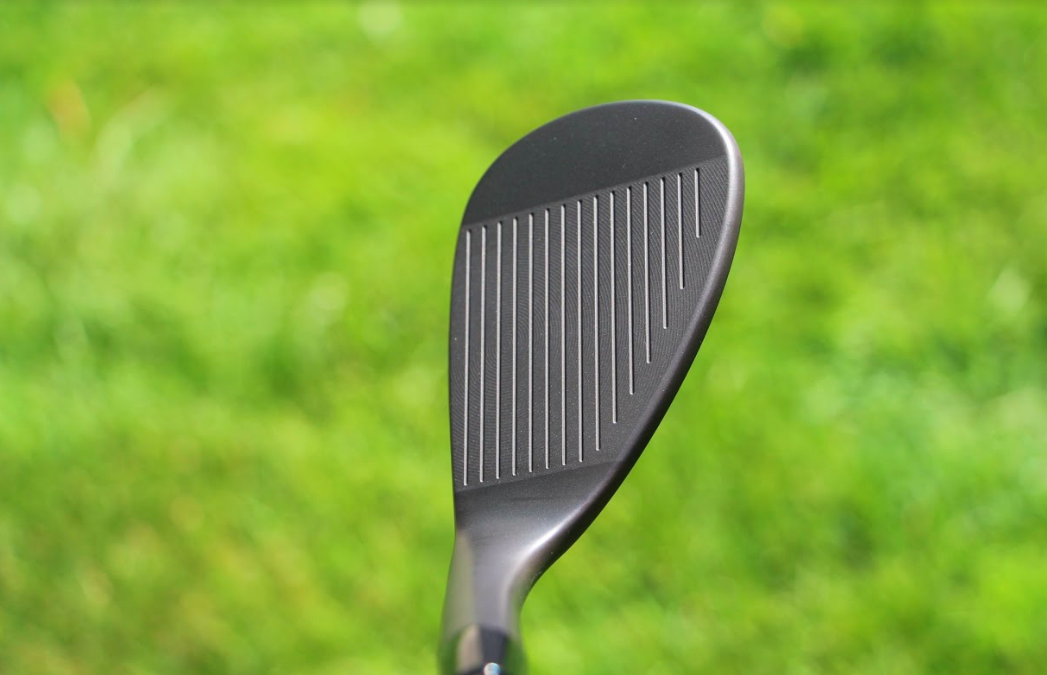
In my last post, I explained the basic performance dynamics of “smash factor” and “gear effect” as they apply to your wedges and your wedge play success. If you missed that post, you can read it here.
At the end of that post, I promised “part 2” of this discussion of what makes a wedge work the way it does. So, let’s dive into the other two components of any wedge – the shaft and the grip.
It’s long been said that the shaft is “the engine of the golf club.” The shaft (and grip) are your only connection to all the technologies that are packed into the head of any golf club, whether it be a driver, fairway, hybrid, iron, wedge or even putter.
And you cannot ignore those two components of your wedges if your goal is optimizing your performance.
I’ve long been an advocate of what I call a “seamless transition” from your irons into your wedges, so that the feel and performance do not disconnect when you choose a gap wedge, for example, instead of your iron-set-matching “P-club.” In today’s golf equipment marketplace, more and more golfers are making the investment of time and money to experience an iron fitting, going through trial and error and launch monitor measuring to get just the right shaft in their irons.
But then so many of those same golfers just go into a store and choose wedges off the retail display, with no similar science involved at all. And that’s why I see so many golfers with a huge disconnect between their custom-fitted irons, often with lighter and/or softer graphite or light steel shafts . . . and their off-the-rack wedges with the stock stiff steel ‘wedge flex’ shaft common to those stock offerings.
If your wedge shafts are significantly heavier and stiffer than the shafts in your irons, it is physically impossible for you to make the same swing. Period.
To quickly improve your wedge play, one of the first things you can do is have your wedges re-shafted with the same or similar shaft that is in your irons.
There’s another side of that shaft weight equation; if you don’t have the forearm and hand strength of a PGA Tour professional, you simply cannot “handle” the same weight shaft that those guys play to master the myriad of ‘touch shots’ around the greens.
Now, let’s move on to the third and other key component of your wedges – the grips. If those are not similar in shape and feel to the grips on your irons, you have another disconnect. Have your grips checked by a qualified golf club professionals to make sure you are in sync there.
The one caveat to that advice is that I am a proponent of a reduced taper in your wedge grips – putting two to four more layers of tape under the lower hand, or selecting one of the many reduced taper grips on the market. That accomplishes two goals for your scoring.
First, it helps reduce overactive hands in your full and near-full wedge swings. Quiet hands are key to good wedge shots.
And secondly, it provides a more consistent feel of the wedge in your hands as you grip down for those shorter and more delicate shots around the greens. And you should always grip down as you get into those touch shots. I call it “getting closer to your work.”
So, if you will spend as much time selecting the shafts and grips for your wedges as you do choosing the brand, model, and loft of them, your scoring range performance will get better.
More from the Wedge Guy
- The Wedge Guy: What really makes a wedge work? Part 1
- The Wedge Guy: The easiest-to-learn golf basic
- The Wedge Guy: Golf mastery begins with your wedge game
- LIKE6
- LEGIT3
- WOW0
- LOL1
- IDHT1
- FLOP0
- OB0
- SHANK5
19th Hole
Vincenzi’s 2024 Wells Fargo Championship betting preview: Tommy Fleetwood ready to finally land maiden PGA Tour title

The PGA Tour season ramps back up this week for another “signature event,” as golf fans look forward to the year’s second major championship next week.
After two weaker-field events in the Zurich Classic and the CJ Cup Byron Nelson, most of the best players in the world will head to historic Quail Hollow for one of the best non-major tournaments of the year.
Last season, Wyndham Clark won the event by four shots.
Quail Hollow is a par-71 measuring 7,521 yards that features Bermudagrass greens. The tree-lined, parkland style course can play quite difficult and features one of the most difficult three-hole stretches in golf known as “The Green Mile,” which makes up holes 16-18: two mammoth par 4s and a 221-yard par 3. All three holes have an average score over par, and water is in play in each of the last five holes on the course.
The field is excellent this week with 68 golfers teeing it up without a cut. All of the golfers who’ve qualified are set to tee it up, with the exception of Scottie Scheffler, who is expecting the birth of his first child.
Past Winners at Quail Hollow
- 2023: Wyndham Clark (-19)
- 2022: Max Homa (-8)
- 2021: Rory McIlroy (-10)
- 2019: Max Homa (-15)
- 2018: Jason Day (-12)
- 2017: Justin Thomas (-8) (PGA Championship)
- 2016: James Hahn (-9)
- 2015: Rory McIlroy (-21)
Key Stats For Quail Hollow
Strokes Gained: Approach
Strokes gained: Approach will be extremely important this week as second shots at Quail Hollow can be very difficult.
Total SG: Approach Over Past 24 Rounds
- Akshay Bhatia (+1.16)
- Tom Hoge (+1.12)
- Corey Conners (+1.01)
- Shane Lowry (+0.93)
- Austin Eckroat (+0.82)
Strokes Gained: Off the Tee
Quail Hollow is a long course on which it is important to play from the fairway. Both distance and accuracy are important, as shorter tee shots will result in approach shots from 200 or more yards. With most of the holes heavily tree lined, errant drives will create some real trouble for the players.
Strokes Gained: Off the Tee Past 24 Rounds:
- Ludvig Aberg (+0.73)
- Rory McIlroy (+0.69)
- Xander Schauffele (+0.62)
- Viktor Hovland (+0.58)
- Chris Kirk (+0.52)
Proximity: 175-200
The 175-200 range is key at Quail Hollow. Players who can hit their long irons well will rise to the top of the leaderboard.
Proximity: 175-200+ over past 24 rounds:
- Cameron Young (28’2″)
- Akshay Bhatia (29’6″)
- Ludvig Aberg (+30’6″)
- Sam Burns (+30’6″)
- Collin Morikawa (+30’9″)
SG: Total on Tom Fazio Designs
Players who thrive on Tom Fazio designs get a bump for me at Quail Hollow this week.
SG: Total on Tom Fazio Designs over past 36 rounds:
- Patrick Cantlay (+2.10)
- Rory McIlroy (+1.95)
- Tommy Fleetwood (+1.68)
- Austin Eckroat (+1.60)
- Will Zalatoris (+1.57)
Strokes Gained: Putting (Bermudagrass)
Strokes Gained: Putting has historically graded out as the most important statistic at Quail Hollow. While it isn’t always predictable, I do want to have it in the model to bump up golfers who prefer to putt on Bermudagrass.
Strokes Gained: Putting (Bermudagrass) Over Past 24 Rounds:
- Taylor Moore (+0.82)
- Nick Dunlap (+.76)
- Wyndham Clark (+.69)
- Emiliano Grillo (+.64)
- Cam Davis (+.61)
Course History
This stat will incorporate players that have played well in the past at Quail Hollow.
Course History over past 36 rounds (per round):
- Rory McIlroy (+2.50)
- Justin Thomas (+1.96)
- Jason Day (+1.92)
- Rickie Fowler (+1.83)
- Viktor Hovland (+1.78)
Wells Fargo Championship Model Rankings
Below, I’ve compiled overall model rankings using a combination of the five key statistical categories previously discussed — SG: Approach (27%), SG: Off the Tee (23%), SG: Total on Fazio designs (12%), Proximity: 175-200 (12%), SG: Putting Bermuda grass (12%), and Course History (14%).
- Wyndham Clark
- Rory McIlroy
- Xander Schauffele
- Shane Lowry
- Hideki Matsuyama
- Viktor Hovland
- Cameron Young
- Austin Eckroat
- Byeong Hun An
- Justin Thomas
2024 Wells Fargo Championship Picks
Tommy Fleetwood +2500 (DraftKings)
I know many out there have Tommy fatigue when it comes to betting, which is completely understandable given his lack of ability to win on the PGA Tour thus far in his career. However, history has shown us that players with Fleetwood’s talent eventually break though, and I believe for Tommy, it’s just a matter of time.
Fleetwood has been excellent on Tom Fazio designs. Over his past 36 rounds, he ranks 3rd in the field in Strokes Gained: Total on Fazio tracks. He’s also been incredibly reliable off the tee this season. He’s gained strokes in the category in eight of his past nine starts, including at The Masters, the PLAYERS and the three “signature events” of the season. Tommy is a golfer built for tougher courses and can grind it out in difficult conditions.
Last year, Fleetwood was the first-round leader at this event, firing a Thursday 65. He finished the event in a tie for 5th place.
For those worried about Fleetwood’s disappointing start his last time out at Harbour Town, he’s bounced back nicely after plenty of poor outings this season. His T7 at the Valero Texas Open was after a MC and T35 in his prior two starts and his win at the Dubai Invitational came after a T47 at the Sentry.
I expect Tommy to bounce back this week and contend at Quail Hollow.
Justin Thomas +3000 (DraftKings)
It’s been a rough couple of years for Justin Thomas, but I don’t believe things are quite as bad as they seem for JT. He got caught in the bad side of the draw at Augusta for last month’s Masters and has gained strokes on approach in seven of his nine starts in 2024.
Thomas may have found something in his most recent start at the RBC Heritage. He finished T5 at a course that he isn’t the best fit for on paper. He also finally got the putter working and ranked 15th in Strokes Gained: Putting for the week.
The two-time PGA champion captured the first of his two major championships at Quail Hollow back in 2017, and some good vibes from the course may be enough to get JT out of his slump.
Thomas hasn’t won an event in just about two years. However, I still believe that will change soon as he’s been one of the most prolific winners throughout his PGA Tour career. Since 2015, he has 15 PGA Tour wins.
Course history is pretty sticky at Quail Hollow, with players who like the course playing well there on a regular basis. In addition to JT’s PGA Championship win in 2017, he went 4-1 at the 2022 Presidents Cup and finished T14 at the event last year despite being in poor form. Thomas can return as one of the top players on the PGA Tour with a win at a “signature event” this week.
Cameron Young +3500 (DraftKings)
For many golf bettors, it’s been frustrating backing Cam Young this season. His talent is undeniable, and one of the best and most consistent performers on the PGA Tour. He just hasn’t broken through with a victory yet. Quail Hollow has been a great place for elite players to get their first victory. Rory McIlroy, Anthony Kim, Rickie Fowler and Wyndham Clark all notched their first PGA Tour win at Quail.
Throughout Cam Young’s career, he has thrived at tougher courses with strong fields. This season, he finished T16 at Riviera and T9 at Augusta National, demonstrating his preference of a tough test. His ability to hit the ball long and straight off the tee make him an ideal fit for Quail Hollow, despite playing pretty poorly his first time out in 2023 (T59). Young should be comfortable playing in the region as he played his college golf at Wake Forest, which is about an hour’s drive from Quail Hollow.
The 26-year-old has played well at Tom Fazio designs in the past and ranks 8th in the field in Strokes Gained: Total on those courses in his last 36 rounds. Perhaps most importantly, this season, Young is the best player on the PGA Tour in terms of proximity from 175-200 in the fairway, which is where a plurality and many crucial shots will come from this week.
Young is an elite talent and Quail Hollow has been kind to players of his ilk who’ve yet to win on Tour.
Byeong Hun An +5000 (FanDuel)
Byeong Hun An missed some opportunities last weekend at the CJ Cup Byron Nelson. He finished T4 and played some outstanding golf, but a couple of missed short putts prevented him from getting to the winning score of -23. Despite not getting the win, it’s hard to view An’s performance as anything other than an overwhelming success. It was An’s fourth top-ten finish of the season.
Last week, An gained 6.5 strokes ball striking, which was 7th in the field. He also ranked 12th for Strokes Gained: Approach and 13th for Strokes Gained: Off the Tee. The South Korean has been hitting the ball so well from tee to green all season long and he now heads to a golf course that should reward his precision.
An’s driver and long irons are absolute weapons. At Quail Hollow, players will see plenty of approach shots from the 175-200 range as well as some from 200+. In his past 24 rounds, Ben ranks 3rd in the field in proximity from 175-200 and 12th in proximity from 200+. Playing in an event that will not end up being a “birdie” fest should help An, who can separate from the field with his strong tee to green play. The putter may not always cooperate but getting to -15 is much easier than getting to -23 for elite ball strikers who tend to struggle on the greens.
Winning a “signature event” feels like a tall task for An this week with so many elite players in the field. However, he’s finished T16 at the Genesis Invitational, T16 at The Masters and T8 at the Arnold Palmer Invitational. The 32-year-old’s game has improved drastically this season and I believe he’s ready to get the biggest win of his career.
- LIKE9
- LEGIT4
- WOW1
- LOL1
- IDHT1
- FLOP1
- OB0
- SHANK1
-

 19th Hole3 weeks ago
19th Hole3 weeks agoLET pro gives detailed financial breakdown of first week on tour…and the net result may shock you
-

 19th Hole7 days ago
19th Hole7 days agoReport: LIV star turns down PGA Championship invite due to ‘personal commitments’
-
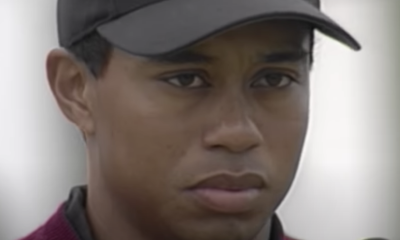
 19th Hole2 weeks ago
19th Hole2 weeks agoGary Player claims this is what ‘completely ruined’ Tiger Woods’ career
-
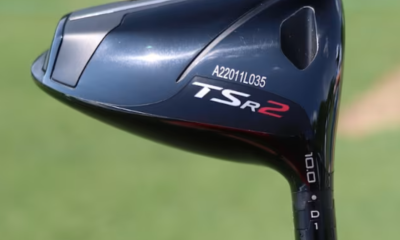
 Equipment6 days ago
Equipment6 days agoDetails on Justin Thomas’ driver switch at the Wells Fargo Championship
-
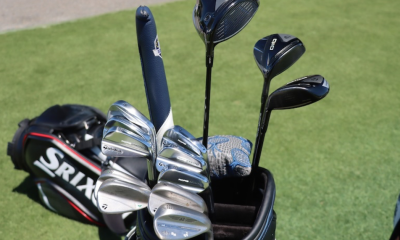
 Whats in the Bag2 weeks ago
Whats in the Bag2 weeks agoTeam McIlowry (Rory McIlroy, Shane Lowry) winning WITBs: 2024 Zurich Classic
-

 Whats in the Bag7 days ago
Whats in the Bag7 days agoKeegan Bradley WITB 2024 (May)
-
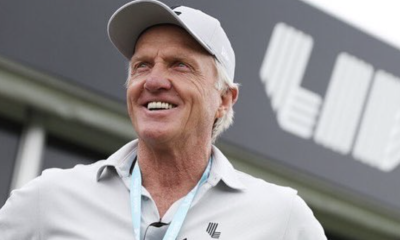
 Equipment2 weeks ago
Equipment2 weeks agoGolf fans left surprised by LIV’s choice of course for its 2024 individual championship event
-

 19th Hole2 weeks ago
19th Hole2 weeks agoLIV star splits with swing coach after working together for 14 years













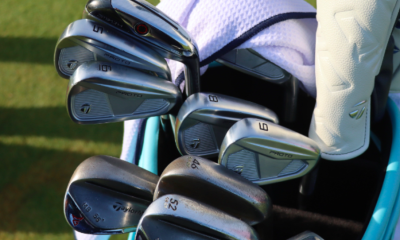



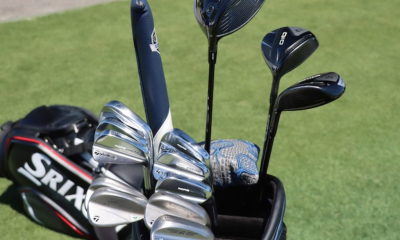

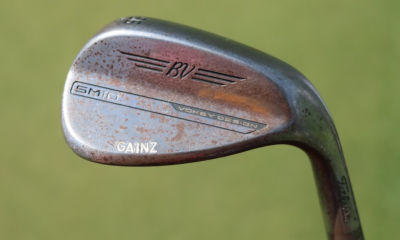

Pete
May 5, 2017 at 4:52 am
I haven’t been a Tiger fan ever since the infamous “loose impediment” incident in 1999 (not in the spirit of golf IMHO). That said, I do hope he can comeback and compete at the highest level again because it will be great for the sport I love.
rymail00
May 4, 2017 at 8:09 pm
Great article Wayne, really enjoyed and hope read more from you. Maybe even lesson articles too if possible.
Steve Wozeniak
May 4, 2017 at 3:34 pm
He is done unless he finds a coach that knows what he is talking about. Foley and Como are twins they teach the same garbage……duh…..let’s swing left, even though the target is not over there and it will destroy my back….yep let’s just swing left baby!!!!!! Time for a course on simple physics….
Steve Wozeniak PGA
SH
May 4, 2017 at 7:16 pm
I love you Steve
Doug Ferreri
May 8, 2017 at 7:21 am
Finally another voice of reason.
farmer
May 4, 2017 at 2:10 pm
WayneD played at a high level-for a club pro. Not close to tour level. Tiger is 41, by WD’s words, it’s going to be 8 months before he can start to work again, so, 42. He’s going to have to learn a new swing, which is going to take a year to get grooved, so he’s now around 43, he’s forced to play a very limited schedule, limited range time … there’s just too many things. Even without the injuries, Tiger last won a major in 2008, and he is at the age where golf careers begin to tail off. I would like Tiger to be pain free, play an occasional tournament with no great expectations and be able to live a normal life, whatever passes as normal for a rich celebrity. As a force on tour, nope, never going to happen.
Mitch Young
May 4, 2017 at 11:44 am
3 years ago tiger woods was still the best iron player in the world when he hit the fw, even though he had the worst year of his career. just put that into perspective, his absolute worse and put an iron in his hands and he beats the best of the best. tiger is a very special talent, one we will never ever see again, all the things that we think that are extraordinary is simply trivial to him. when you are so ahead of the curve, you will always have a boxer’s chance at winning in golf or better yet a major championship. the masters is a crap shoot with a limited field every year. the british open is weather the most weather dependant major. i doubt tiger would ever win a US open, he just doesn’t drive the ball well enough to be a front runner. the pga i say he will have a harder time winning. so for a 42 year old with multiple back surgeries, he still has a 2.5/4 of winning a major.
James Stephens
May 4, 2017 at 10:03 am
Tigers never gonna swing hands out coming down. He can’t do it. He’s done. Wayne D is a master bs artist
Mr Muira
May 4, 2017 at 8:14 am
Tiger is done, fried, cooked, finito. It was a pleasure watching him.
NolanMBA
May 4, 2017 at 7:31 am
My “good back” friends just don’t know what it’s like… When you are in an icy parking lot and consider getting down and rolling/crawling to get where you need to go just to prevent slipping and throwing your back out– then we can talk.
larrybud
May 3, 2017 at 10:39 pm
Because a 3 is sooo close to top pga tour players… huh.
lolerballz
May 9, 2017 at 4:59 am
haha! the classic USGA +3 hcp and yet if you play with him, he never goes lower than 80 :DDD
Jude
May 3, 2017 at 10:07 pm
Your writing is a breath of fresh air. Very encouraging I pray he plays again competitively.
Fat Perez
May 3, 2017 at 4:38 pm
Come back to WHAT?!
mlecuni
May 4, 2017 at 4:20 am
New era of TIGER being called PHOENIX ?
MATTHEW SIPE
May 3, 2017 at 3:48 pm
Everyone overlooks the amount of practice (daily) he would need to get back into tournament shape. That’s not gonna happen, he can’t continuously practice the amount needed to perform on the highest level due to these injuries.
H
May 3, 2017 at 11:41 am
You forget that the women get in the way. How he destroyed so many of them. Edlrick’s ego too. And the kind of money we’re talking about that Eldrick has, compared to what Hogan was making, is astronomical and can’t even be compared, the money is a massive factor that will take away the hunger to go after it. Plus it’s mostly the public and media scrutiny he faces every time he steps out to the course that he can’t handle. He never has been smart at making speeches nor speaking in public. His management team and agents surround him in a cocoon now so he doesn’t put his foot in the wrong thing, you can see he’d rather just be at home with the kids and be left alone. His agents and publicists are geniuses at keeping Eldrick’s noise in the media, keeping the world up to date, even trying to upend other people’s successes by publishing updates at inappropriate times. That’s the world he lives in. If it was pure golf for winning tournaments only and going for records, I’m sure he’d be out there gunning for it, but all this other stuff have stopped him. Has anybody asked how often he speaks to Elin or allow her to see each other’s kids or themselves, for that matter?
Dorcas
May 3, 2017 at 4:18 pm
“He never has been smart…”
The irony is real.
Bob Jones
May 3, 2017 at 11:29 am
Three spine surgeries here. I’ve had to learn to accept my limitations. I’m not sure Tiger’s out-sized ego can accept his. But, then, is he willing to go through missed cuts and mediocre finishes in his attempt to come back? Be just another Tour pro on his way to…what? That, not his back, will be the sticking point.
Golferguy
May 3, 2017 at 11:14 am
Tiger’s been beating up on his body with golf since he 3 or 4 years old. He should just take what’s left of his health and move on to coaching.
Chopper
May 3, 2017 at 11:09 am
So here is a guy that has played golf at the top 0.01% level and has happened to have very similar injuries and surgeries and all you 15 handicappers immediately dismiss his opinions because they do not line up with your predetermined outlook on Tiger. Interesting.
BD57
May 3, 2017 at 7:53 pm
Nelson, Snead, Palmer, Player, Weiskopf & Nicklaus, none of which I’m aware.
Hogan … um, there was this head on collision with a bus …….
hburt
May 3, 2017 at 10:43 am
Very well written article. You obviously know more than most about back pain and the golf swing. Like you said, with this major fix Tiger will have a chance to play pain free again. But still remains to be seen. Even if the physical part works out, he will have to muster the mental strength to come back and win again.
Definitely don’t question his mental strength when Earl was around – it was unparalleled. But since 2006, I do question it. I’m not sure he has it in him to humble himself and make swing changes to accommodate his physical limitations. Don’t think it’s in his DNA. I think he gets frustrated and just tries to power through.
I don’t question that he wants to come back and win. But I don’t think he knows how to struggle through tough times. His whole life he has always been the best. Not saying he didn’t work hard, but I think everything came pretty easily to him. He’s not used to seeing other guys blast it past him. He’s not used to having the chipping yips. That sort of thing never used to happen to him. I think it’s taken him down a few pegs, in our minds and in his own. That is what I think he won’t be able to overcome.
We’ll see. I actually hope you’re right and I’m wrong.
Tcann32
May 3, 2017 at 4:04 pm
I think you’re spot on with the statement of it not being in Tiger’s DNA to change the way he plays.. not enough to follow through with it anyways. He has started to change some aspects, but I just don’t see him slowing things down enough to make the necessary changes. This also begs the question: Without Tiger’s swing, the one that won countless tournaments (80-ish?) and 14 majors; is it still Tiger, and will he be good enough to compete as he once did with a different swing and approach to the game? He’s obviously going to be able to hold on to many, many very strong aspects of his game, but can he re-vamp other parts of his game well enough to compete with some of the things he will have to give up? Like you, I hope I, and you, are wrong. It’d be great to see him come back and win. Even just win a regular tournament. 2013 was really exciting to see the big cat come back and win again, even if it didn’t include any majors.
With what he has shown so far though, he’s going to have to re work his swing, his approach to the game, and his mental game as well, and that’s the part I think will hold him back. He’s a golf nut and couldn’t stay away entirely the last couple years, and couldn’t make the changes needed to stay healthy, and I’ll be surprised if he can do it again. Not to mention, after hitting what I must assume is a million golf balls with the same swing over many years, and now having that swing be limited, the road to recovery will include more than feeling good again, and will entail re-learning everything. I’m sure he can learn faster than anyone, but his muscle memory won’t do him any good because he’s going to have to change so much. His mental and muscle memory might even hurt him because those are the things that can’t be erased and much of it won’t fit into what he’s going to presumably attempt to do now. .
TvGuyJake
May 3, 2017 at 10:25 am
TW couldn’t even make it back as a caddie? I love the reasoning in these articles…ooh “let em get the reader’s attention” with some specious reasoning. Take off the rose-colored glasses,,,you’ve seen the last of TW; and that includes the Senior Tour. #MoveOn
Joe
May 3, 2017 at 10:10 am
the tiger is done. sorry. move on.
JD
May 3, 2017 at 9:42 am
Yeah sure…. and Grizzly Adams had a beard.
ooffa
May 3, 2017 at 9:16 am
Nah he’s washed up. Forever. Not coming back. Have to say he had a great run though.
Rex
May 3, 2017 at 10:26 am
Best run ever. Better than jacks. If anyone wants to argue that first think about wgc events
ooffa
May 4, 2017 at 8:51 am
That’s the issue. Tiger was a run. Jack was a marathon. The runner has collapsed. Jack was better.
Greg V
May 3, 2017 at 9:10 am
Hogan had only won 3 majors before his accident (4 if you count the Hale America Open during WWII). As well, he started his equipment company in 1953, so he had plenty of reasons work his tail off to win majors.
Tiger has already won 14 majors. Where’s the incentive?
ROY
May 3, 2017 at 9:57 am
He’s still short of Jack and Sam – thats his incentive…..
Tcann32
May 3, 2017 at 8:58 am
I have similar injuries to the writer, and to Tiger. It’s awful, nasty, and no fun at all. I have yet to undergo surgery as I’ve already had eight or nine operations in my shorter life span, and am not interested in going in for another. That being said, some days it seems like it’d be worth it.
Now, if the back is anything like other injuries after an operation, then the writer nailed it on the head in saying that Tiger will need to change some things about his swing and the way he plays. It’s possible to get your body to perform well enough to achieve the same end results as before, but you can’t do it in the ways in which you became injured in the first place, and Tiger doesn’t seem to want to change that so much. I also believe that with the right changes, he could come back in much better form than he has. The only question I really have, is without that explosive swing and style of play, will it really be Tiger, and will he be good enough to beat those that might not be as good as Tiger once was, but are better than Tiger on his bad, mediocre, and decent days. I don’t think he’d win tournaments by 10 strokes anymore, healthy or not, so he will have to excel in other facets of the game in which he can get a leg up over the field again, while giving up the advantages he used to have.
Steve S
May 3, 2017 at 8:52 am
I agree that Tiger COULD play and be good again, but I don’t thing his ego will allow him to revert to a finesse game from his power game….and he’ll have to become a much better putter.
Hans
May 3, 2017 at 8:51 am
Tiger is the needle so you are probably going to get a lot of opinions here, but I just wanted to say thanks for the insight. Coming from someone who also had a fusion and played played golf at a very high level, it’s interesting what you say about a player being to play with limitations (but not pain). It would seem that being able to practice less is a big limitation (esp for Tiger since he likes to make swing changes) which might be the biggest roadblock, that and his age (he doesnt have a ton of time to learn to adapt). Insightful to hear how you were able to adapt and produce great golf again in a similar situation.
cgasucks
May 3, 2017 at 7:56 am
I look forward seeing Tiger win again….on the Champions Tour.